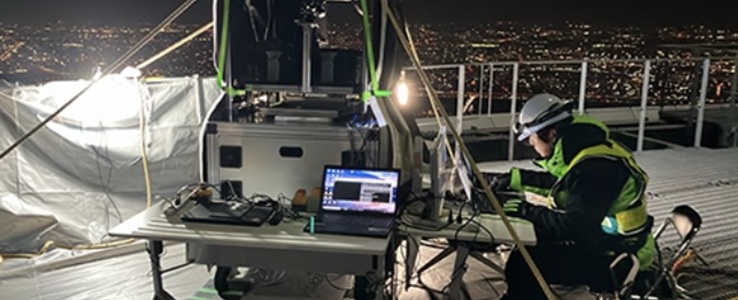NEC Corporation has successfully achieved Japan’s longest terrestrial wireless optical communication, or free-space optical (FSO) communication, over a distance of more than 10 km. In addition, the Japanese company has successfully conducted FSO communications between an observation deck at TOKYO SKYTREE, the tallest structure in Japan, and a location on the ground approximately 3 km away, representing a significant change in elevation, according to a media release. FSO is a wireless communication method that enables high-speed and high-capacity communication compared to radio waves.
It transmits and receives light beams without using physical paths such as optical fibers. Additionally, it has high directionality and does not spread beams, resulting in low risk of interception by third parties, reduced interference and congestion in communication, and no need for radio wave usage permits. In addition, it is expected that the technologies will be used as an alternative or emergency communication method in the event of a disaster when wired communication networks become damaged, making communications difficult, as well as for highly confidential short- and medium-range communications related to national security.

Conventionally, one of the challenges for FSO communications has been overcoming the negative impact on stable communications from atmospheric turbulence, such as heat haze, that increase with distance, and it has been difficult to grasp atmospheric turbulence that differs between different elevations. NEC has now successfully achieved communication over a distance of more than 10 km and communications at different elevations with FSO communication by applying its capture and tracking technology developed for its communication systems and long-distance optical communication technology used in satellites..
Technology

NEC achieves Japan’s longest free-space optical communication

FSO is a wireless communication method that enables high-speed and high-capacity communication compared to radio waves.















